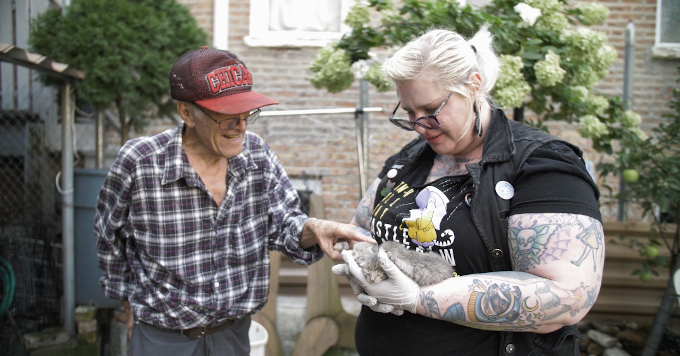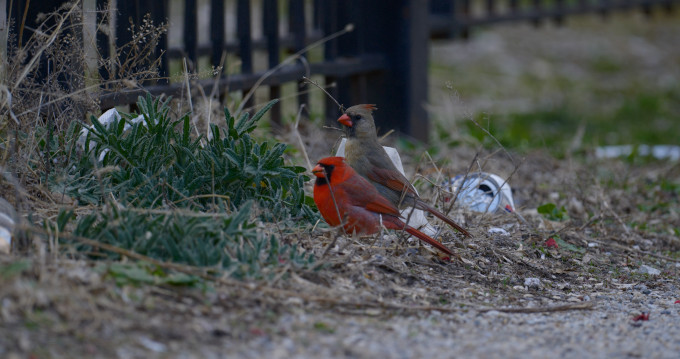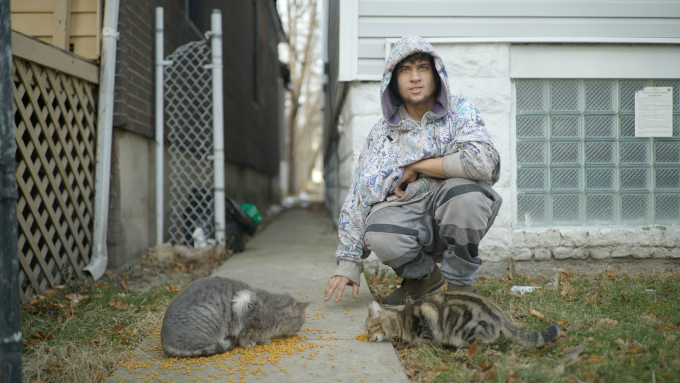‘Cat City’: Chicago Turns Feral

“When you take a homeless cat away from a homeless person—that’s their baby!” That is just one of the passionate quotes from a concerned citizen in Ben Kolak’s documentary, Cat City (First Run Features). But in Chicago, a city that can claim a population of over 200,000 feral cats, corralling a species that humans have had a complex relationship with for thousands of years is no easy task.
The most popular solution has been a process called TNR, which translates to “Trap, Neuter, Return.” To counteract movements, such as one in Wisconsin which would have allowed hunters to shoot the feral felines, organizations such as PAWS Chicago have gone full speed ahead in “building no kill communities”. And the strength of the film lies in a close, hands-on focus on some of the volunteers and stray souls who have made it their mission to help.

Autumn is an outspoken activist who makes no bones about her commitment. Like a number of other activists, she wrestles with her own limitations. But her Crohn’s disease—she is pictured administering shots into her own tattoo-covered body—doesn’t stop her from combing the neighborhoods, knocking on doors, and finding the male culprit of a growing feral community. One female kitten can become pregnant in a mere five months. “It’s okay if I get bit and end up in the hospital.” She’s a martyr to the cause.
There are others who have heard the call, such as Dora in the Humboldt Park area, who just “kinda fell into it.” To save her “bottle babies,” she lost six pounds in 10 days, rising every three hours to feed her orphan family. An aging Vietnam vet is seen combing the ragtag region around the Maxwell Street Market, finding in his desolate digs felines he could feed a couple of times a day.

Such devotion is not without of skepticism about the movement’s success. The South Shore Cultural Center sports a number of committed “birders” who appreciate those varieties visible around the lakefront, 17 species, for example, that don’t migrate. They consider feral cats – not climate change – as the number-one challenge to the birds’ survival. One book cited in the film is Cat Wars: Thee Devastating Consequences of a Cuddly Killer, co-authored by the activist Peter P. Marra, which examines the real threats to biodiversity.
Any documentary whose subject is centered around a species we have come to domesticate, coddle, and spoil over the centuries must include a healthy degree of footage of the irascible creatures. And there are enough moments to elicit the typical oohs and aahs from viewers, enhanced by an original score by Jamaal Crouder and Hannah Kolak. But the director has wisely avoided pandering simply to a sentimental treatment. A feral overpopulation of cats in any society upsets nature’s delicate balance.

Maybe with a shared commitment with our nonhuman population, we can make it succeed. In the words of naturalist Roger Caras, “Cats are not our whole lives, but they make our lives whole.”

Author Bio:
Sandra Bertrand is Highbrow Magazine’s chief art critic.
For Highbrow Magazine
Photo Credits: Depositphotos.com; First Run Features






































































































































































































































































































































